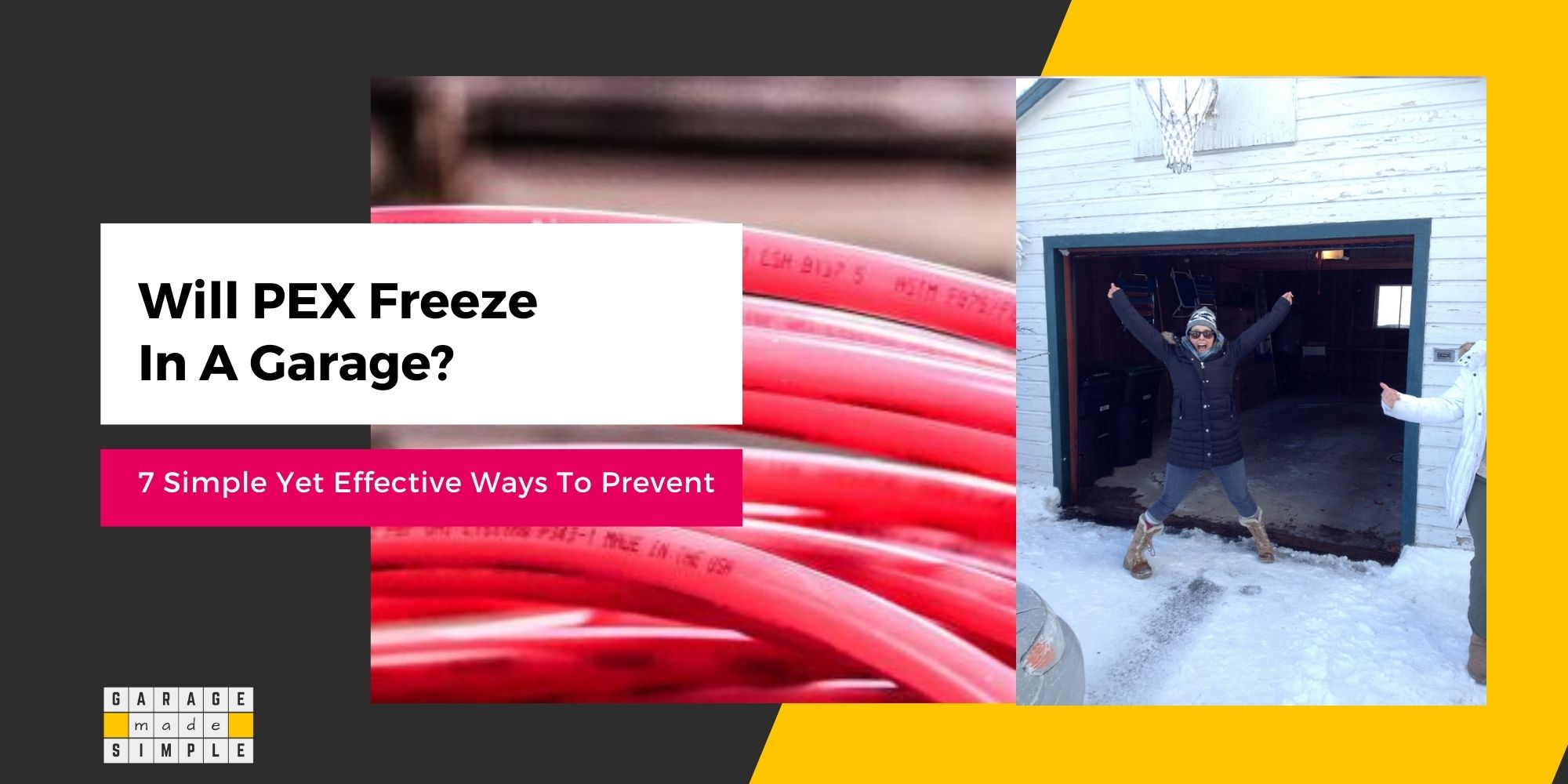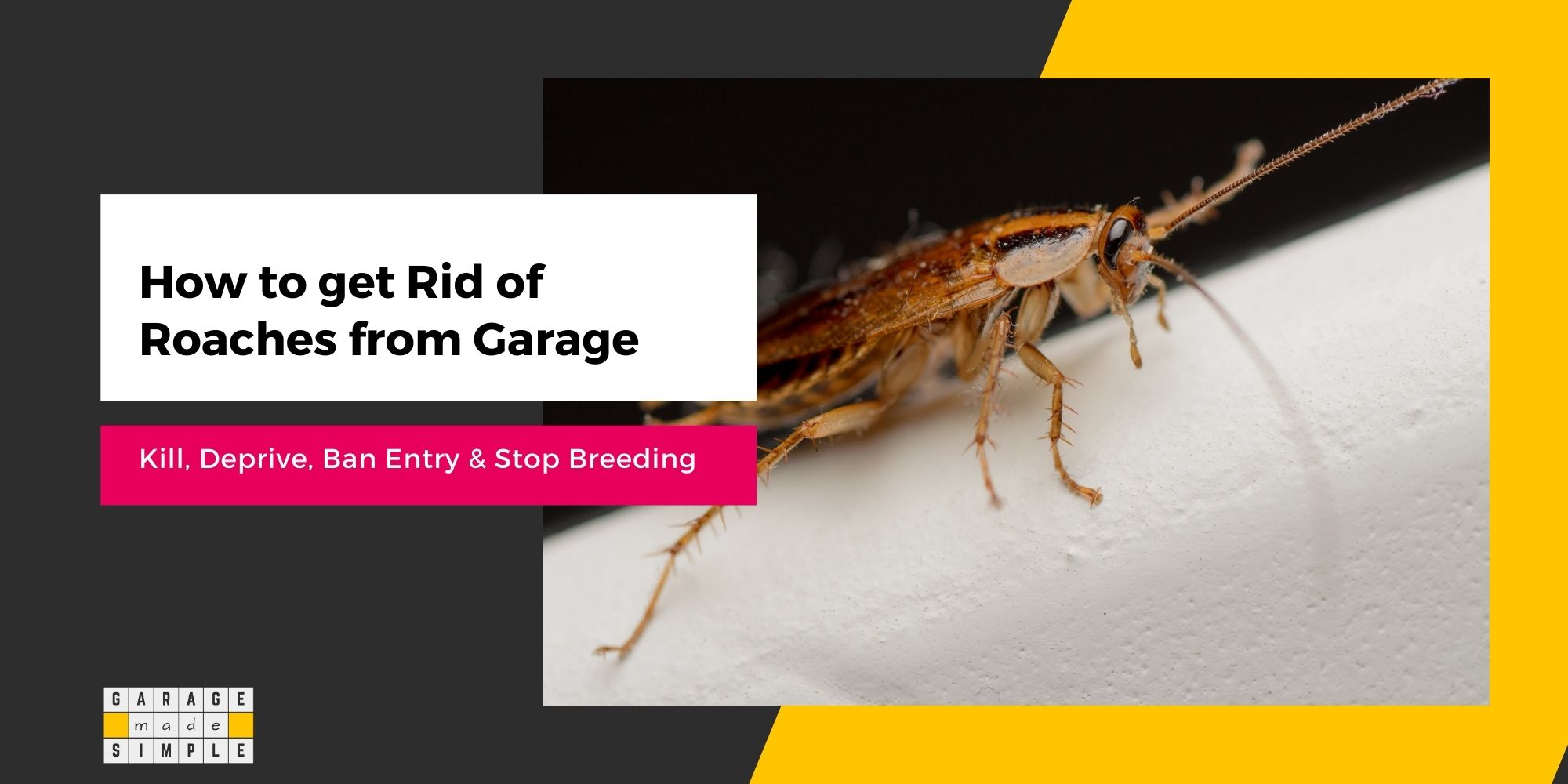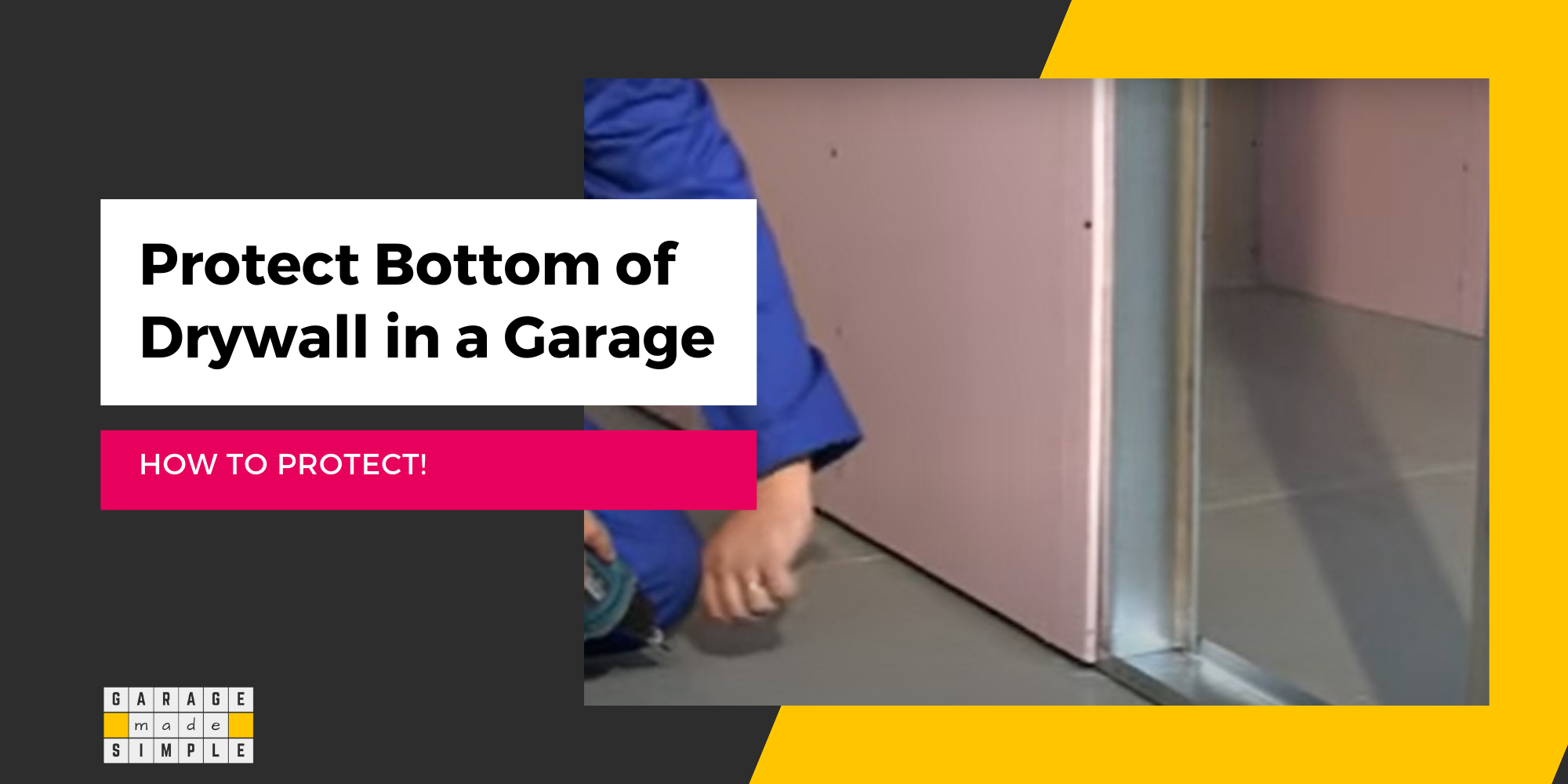8 Amazing Ways To Use Liquid Rubber In Your Garage!
garagemadesimple.com is a participant in the Amazon Services LLC Associates Program, an affiliate advertising program designed to provide a means for sites to earn advertising fees by advertising and linking to Amazon.com . The website is also an affiliate of a few other brands.
Liquid Rubber has a host of products that can be used in your garage. There are more uses of Liquid Rubber products than that you may have thought of. So in this post I am going to talk about 8 Amazing Ways To Use Liquid Rubber Products In Your Garage!
Liquid Rubber uses a blend of synthetic rubber with other resins to create products that are:
- Water based, VOC & Solvent Free
- Seamless, Flexible, Waterproof Membrane
- Resistant to Salt & Chemicals
- Resistant to UV Radiation & Thermal Cycles
- Designed for Easy DIY Application
- Safe & Eco Friendly
So let’s get started on the 8 amazing ways you can use Liquid Rubber products in the construction and maintenance of your garage.
#1 Waterproofing Garage Foundation
The first step in building a garage is to build the foundation. As the foundation is mostly under grade, it is absolutely essential that it should be waterproof.
If the foundation is not waterproof then the water in the ground will seep through due to hydrostatic pressure. The garage will flood, sometimes even when there is no rain.
Soil conditions and the terrain differ from location to location. The saturation of the grade impacts the water table. If the saturation increases the water table rises. The increase of water level in a nearby river or lake can cause the water table around your garage to rise.
How do you protect the foundation and prevent groundwater from seeping into the garage?
Build a French Drain around the garage perimeter & waterproof the garage foundation with Liquid Rubber.

RECOMMENDED PRODUCT: Liquid Rubber Foundation and Basement Sealant
Remember both have to be done. Just one of them will not be a complete solution. I have a step by step guide on my earlier post The Best Way of How to Waterproof Your Garage Walls.
FUN FACT: French Drain & Trench Drain are similar yet different. Both are buried under grade but a French Drain diverts groundwater, whereas, a Trench Drain diverts surface water.
#2 Sealing Bottom of Interior Garage Wall
Applying Liquid Rubber Waterproofing Sealant to the garage foundation exterior is the best option. But sometimes this is not possible. Or sometimes you just want that extra protection.
On these occasions you can apply Liquid Rubber on the bottom of the drywall on the interior garage wall where it meets the garage concrete floor.
You can use the same product as the one mentioned above.
For a new garage make sure that concrete has been allowed to cure for at least 28 days. For old garages Liquid Rubber Foundation Sealant can be applied over pre-painted surfaces including over aged solvent-based coatings.
Surface preparation and application process is the same that you would use when applying standard latex paint. For best results, ensure that
- Surface is free of dirt, dust and flaking paint. Degrease the surface to ensure good adhesion.
- Do not apply in wet, humid or very cold conditions.
- Cracks in the concrete are repaired & filled with a Crack Injection Kit
- Cover both the concrete floor & the bottom wall to ensure the joint between them is completely sealed.
- Build up the membrane thickness coat by coat.
- The product does not dry to a hard finish. Tacky is OK and a characteristic of the product.
#3 Painting the Garage Walls
Why stop at using Liquid Rubber just on the bottom edge of the garage wall? If you have a brick, concrete cinder or cement wall, you can use Liquid Rubber all the way. It is a great way to keep your garage dry even on stormy days!

RECOMMENDED PRODUCT: Liquid Rubber Color Waterproof Sealant.
Pick a color of your choice from the 8 off the shelf colors available. Or use White and overcoat it with latex paint in another color.
#4 Coating of Garage Floor
Epoxy coating is the most popular coating for garage floors. No doubt an epoxy coating is excellent for a garage floor. One of the reasons is that epoxy coatings are very hard.
However, epoxy on concrete has one disadvantage. Concrete, sooner rather than later will crack. Epoxy is hard & brittle, so it mirrors the crack. Water from snow melt, rain or just condensation can penetrate into the garage concrete floor.
Water seepage into a concrete slab is quite detrimental to its durability. The concrete surface will start to crumble. If the concrete of your garage floor has way too many cracks, liquid rubber coating may be a better option than epoxy coating, epoxy paint or garage floor paint.
Liquid Rubber paint will seal any cracks in the concrete, making it very waterproof. It is easy to clean the garage floor as the coating is smooth.
Before applying Liquid Rubber Paint, clean the concrete floor by degreasing, where required, and pressure washing the surface with water. Let it dry for 24 hours and do a moisture test.
A simple way of testing moisture in or condensation on a concrete floor is explained in my post https://garagemadesimple.com/how-to-make-sure-your-garage-floor-is-never-damp/

If the floor is dry then you should apply a thick coat of Liquid Rubber Multi-Purpose Primer.
The finish should be 3-4 coats of Liquid Rubber Smooth Polyurethane Deck and Dock Coating. Use 1 Gallon of coating for every 40 square feet of floor area. In areas with heavy traffic use 1 gallon for just 30 square feet.

You need to build up a thicker film thickness. The PU Liquid Rubber Coating will deliver a hard waterproof surface. The product is available in 10 color choices that will complement any garage décor.
#5 Waterproofing Garage Roof & Gutters
Garage roofs are likely to start leaking, sooner rather than later, due to deterioration caused by weathering. Fortunately, Liquid Rubber can be used to seal almost every type of roofing material. It can be applied on a flat or sloping garage roof.

Use Liquid Rubber Waterproof Sealant, Original Black if a black roof is OK with you. This product is cheaper.
Should you want your garage roof to look colorful Liquid Rubber has a color version of the sealant too. Pick a color of your choice from the 8 off the shelf colors available. The Amazon link for the white color is Liquid Rubber Color Waterproof Sealant, White.
Some types of roofing material may require a primer. Here is a table that you will find helpful.
| Roofing Material | Primer |
| Wood | Not Required |
| Concrete | Liquid Rubber Multi-Purpose Primer |
| Mod-Bit / Torch Down | Not Required |
| Asphalt Shingles | Not Required |
| EPDM Rubber | Liquid Rubber EPDM Rubber and RV Roof Primer |
| Metal | Water Based Rust Primer for Rusted Metal |
| Spray Foam | Not Required |
You should also make sure that the gutters do not have any leaks. This can be done by removing the old caulking & silicone and bridging joints & seams with Liquid Rubber Seam Tape.
Apply a couple of coats of Liquid Rubber Waterproof Sealant, Original Black.
#6 Seal the Asphalt Driveway in front of the Garage
The asphalt driveway in front of your garage begins to break down with time. But you can slow down the degradation. Add years more to its life by sealing it with Liquid Rubber Driveway Restore Sealant.

The product is highly flexible and UV stable, so it can withstand weathering for many years without cracks.
Here is how to do it.
- Ensure a clean, dry surface by power washing
- Degreaser may be needed for oil spots
- Fill large cracks and small holes with Liquid Rubber Crack Repair
- Prep perimeter and cracks by brushing
- Use an 18″ Foam Squeegee to spread
- Use 1 Gallon for every 50 square feet in 2-3 coats
It’s that simple!
#7 Sealing Cracks & Leaks in Garage Drainage
You may have drains installed in your concrete garage floor to divert snow melt or water from the car wash. The drain may be a simple concrete trench in the floor. Or it may be a galvanized Iron or PVC drain embedded in the garage concrete slab.
Either way, there is a high risk of water from the drain seeping into the surrounding concrete. It can make its way through cracks in the concrete drain or leakage in trench drain joints. The water seepage is slowly but surely destroying the concrete slab.
You can seal the drain using one of the following Liquid Rubber products:
Concrete Drain
RECOMMENDED PRODUCT: Liquid Rubber Foundation and Basement Sealant – Indoor & Outdoor Use – Easy to Apply – Waterproof Coating – Black, 5 Gallon available at Amazon
Plastic or Metal Drain
RECOMMENDED PRODUCT: Liquid Rubber Seam Tape.
Metal Grates on the Drain
RECOMMENDED PRODUCT: Liquid Rubber MetalSafe Sealant.

The product is a Flexible Corrosion Coating with great features:
- Ultrahigh corrosion protection
- Can be applied directly over lightly rusted surfaces
- Creates a long lasting waterproof membrane
- Excellent adhesion, chemical and UV resistance
- Resists cracking, chipping, impact and abrasion
- Resistant to freeze/thaw cycles
- Withstands extreme hot and cold environments
- Easy to apply roller, brush & spray equipment
- Available in BLACK ONLY
#8 Making Walkway to Garage Slip-Resistant
When you have a detached garage you need to have a walkway leading upto the house. There are a ton of options when it comes to choice of the walkway material. Below is a short list:
- Clay or Concrete Pavers
- Natural Stone
- Gravel or Asphalt
- Poured or Stamped Concrete
- Wood Planks
By no means is this list exhaustive. I am sure there are many other options out there.
The walkway is constantly exposed to the elements which decreases their life. Water accumulation on it will encourage moss to grow and encourage algae & moss to grow, making the surface slippery and hazardous.
In many instances (though not all) the walkway can benefit from the application of one or the other Liquid Rubber product.
The Liquid Rubber Polyurethane Deck Coating delivers a hard waterproof surface which is extremely durable, aesthetically appealing and slip resistant. Liquid Rubber Polyurethane Deck Coating is designed to be 10 times stronger than traditional deck coatings.
The Liquid Rubber Cool Foot Deck Coating is designed to reduce heat transfer by up to 35%. A great choice if you live in one of the southern states where summer temperatures are often in three digits.
Liquid Rubber Deck Coatings come in attractive color and texture options that can be applied to deck boards, plywood, and concrete. Meanwhile, the coating’s waterproof membrane has excellent solar reflectivity and UV stability to enhance appearance and performance. Plus, it’s easy to apply.
RECOMMENDED PRODUCT: Liquid Rubber Cool Foot Deck and Dock Coating.

Thank you very much for reading the post. I do hope you found it informative and useful.






